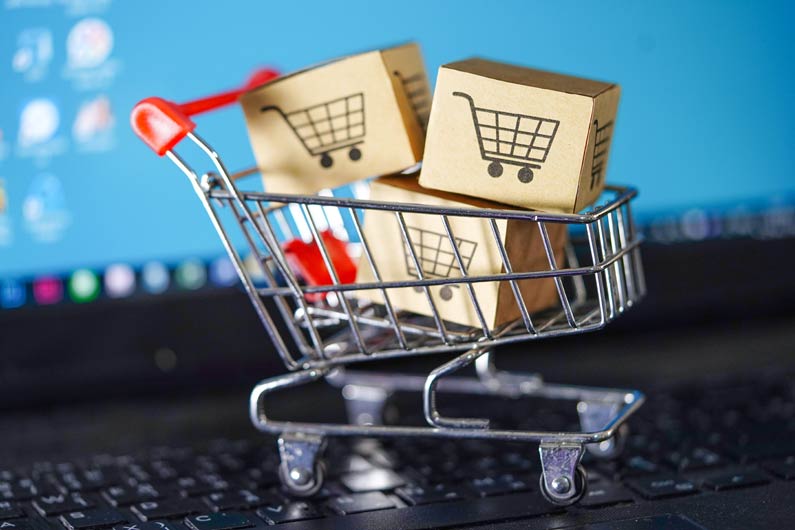Selling your products internationally can be rewarding, as it can significantly affect your sales.
Unlike 20 years ago, businesses these days don’t need to have a multi-million budget, multinational team, and physical presence that they own and operate themselves to sell globally.
The pandemic also opened tons of opportunities for ecommerce growth as governments enforced movement restrictions due to lockdowns.
Global ecommerce jumps to 26.7 trillion dollars (fuelled by Covid-19) according to this UN report on ecommerce. It broke eMarketer’s projection of 10+ trillion worth of sales for 2021-2022 by a mile as published on Oberlo.
Numbers tell us that e-commerce is an excellent opportunity, but you need to make necessary changes in your strategy to meet international customers’ needs and demands.
In this post, we’ll walk you through practical ways to start selling your products internationally:
Conduct Thorough Market Research
The likelihood of success when selling internationally will depend on how much market research you do beforehand.
Market research will give you insight into where your goods and services will sell, various market segments, whether or not you have competitors, and how you price your products for the market.
You might also do primary market research, gather data from international marketplaces via phone interviews, or contact prospective customers or government representatives.
Furthermore, this also includes secondary marketing research through trade statistics, news articles, and data from export specialists.
Choose the Right Channels
Next is to ensure that you have the right marketing strategy. Local targeting on platforms like Facebook and Google is pretty straightforward.
However, you might also consider other marketing channels that are popular in the countries you’re planning to target.
For instance, there’s a completely different digital marketing landscape in China, where Baidu is dominating there instead of Google.
Optimize Your Online Store
No matter where in the world your customers are, your website will be their buying hub. So, depending on your business size, you might want to open up unique online stores that cater to a particular country or region.
You can also optimize your site content for international buyers using a multi-language translator. Another alternative is to make optimized landing pages for a particular country or region.
For instance, many e-commerce brands will provide an option for their international customers to view particular pages in their own language and then feature the available products in their area.
Translate Your Store
As mentioned in the previous point, if you’re planning to expand internationally, your target demographic should share the same native language as your own.
Or, if you want to take it to the next level, you should invest in translating your e-commerce store into the same language as a particular country or region that you’re targeting.
That’s because most international buyers would like to browse an e-commerce store in their native language.
That’s why a translated store is one of the most powerful tools that you can use to boost international sales.
Think About Shipping and Returns
With a cross-border sale, an international return can happen. Now, legislation on how these will be handled with vary depending on the market.
Here are some tips:
Create clear expectations on the delivery: International shipping takes a lot longer and is more costly in the long run.
Therefore, you need to keep shoppers in the loop. Provide them with an accurate delivery depending on the country and a list of shipping costs.
The right inventory planning is also key.
Also, when establishing a return policy when putting together your policy, consider the following:
- Requirements stated by local consumer laws.
- Refund policies, such as when you’ll be issuing them and whether you’ll be giving store credit or a cash refund.
- A time limit for returns.
- Restocking, return delivery, other fees.
Offer Local Customer Service
To meet the needs of non-English speaking customers, you should consider hiring native speakers or partner with companies that will help you assist foreign customers.
Although costly, you should identify which particular market is really in need of native speakers.
If these markets are smaller, you can provide local-language customer information on a FAQ page or something similar.
You can also use a client portal to offer language-specific support to customers in these markets, enhancing their experience and fostering trust, even if the market is smaller in scale.
You should also provide an email address for these customers.
Your customer service team should also be trained in every aspect of your business.
They should know the calculations for customs and duty, know how to process refunds based on your policy, and help customers with returns-related questions.
Handle Shipping and Fulfillment
To successfully sell a product internationally, you should ship the products as quickly as in the local market, or preferably a lot quicker.
Here are some tips to make this happen:
- Know the customs and international shipping regulations.
- There will be penalties for not knowing the rules beforehand. It can also lead to delays and huge fines.
- Look at the costs of international shipping.
- Duties, tariffs, fees, and taxes will depend on which area you’re shipping from and where you’re shipping to.
- The next is making sure you pack the products securely.
- Pick the right packaging size depending on the shape and weight of the product. As a global e-commerce business, it is crucial to have a solid understanding of international shipping regulations and costs to ensure efficient and timely deliveries. Utilizing route planner solutions can also greatly assist in streamlining the process.
Try to Avoid Empty Spaces
Packages should be sealed securely. No one likes to get an open package.
Put clear labels, or else the item won’t get shipped. When selling high-end products, make sure that there’s shipping insurance as well.
Find the Right Shipping Provider
Work with a shipping vendor that will ship your products internationally. Ideally, work with a single vendor that can cover your target market.
Partnering with third-party fulfillment companies will do a lot of heavy lifting if you’re shipping internationally. It’s worth the cost, effort, and fulfillment quality.
Look Into Specific Rules and Regulations
Look up the rules and regulations for the countries you want to sell your products.
Here are some things that you need to consider:
- Duties and taxes: How will these affect the prices of items you’re selling if you plan to sell in your target markets.
- Customs: This agency regulates the shipments that enter a particular country or region. All your international shipments will go through customs.
- Trade-free agreements: This decreases or eliminates tariffs for some products, and these agreements can be an advantage to international sellers.
- Limitations on shipping: International shipping can also be challenging for products considered off-the-limits on air travel. Items like chemical sprays, battery-operated devices, etc.
Over to You
So there you have it. Hopefully, these tips will help you as you start selling internationally.
Selling your products abroad is an exciting adventure in itself, as it can expose your business to new countries and customers.





